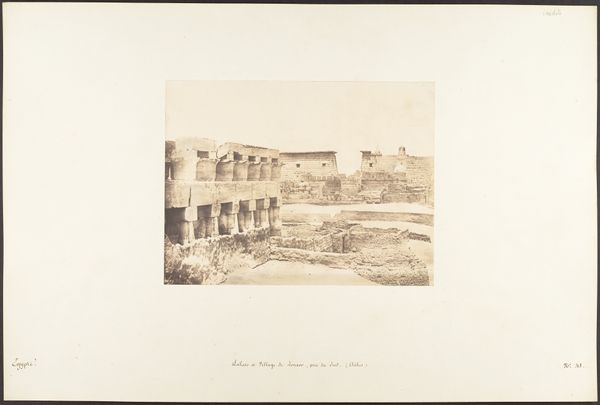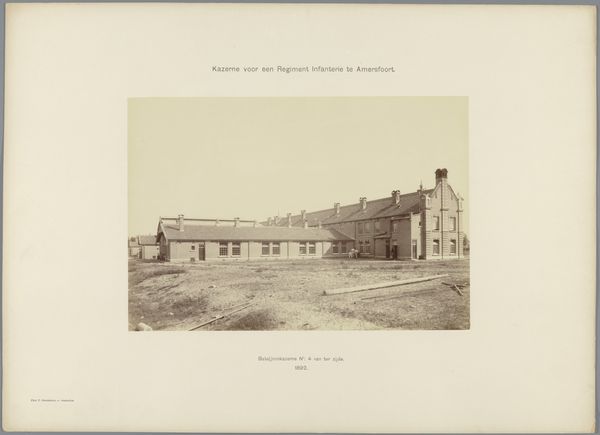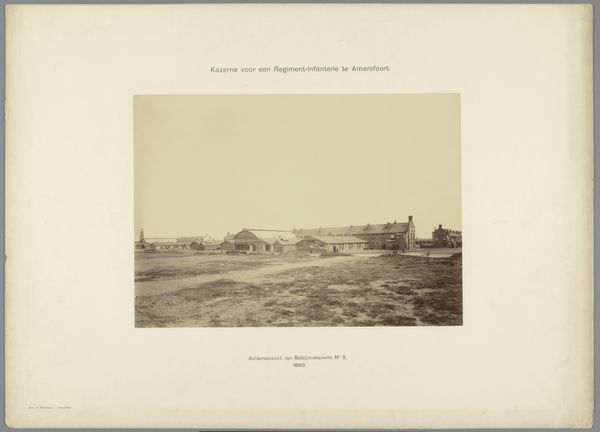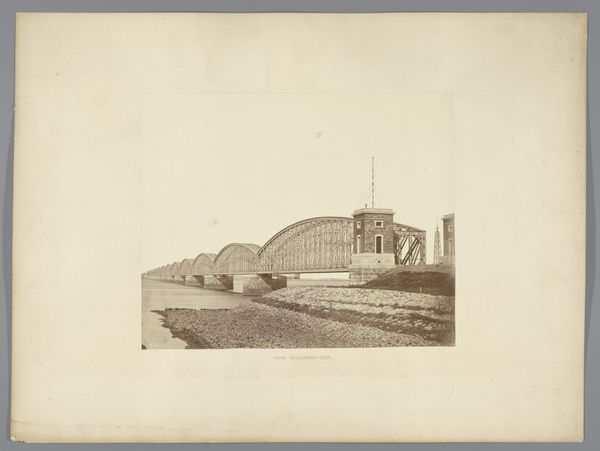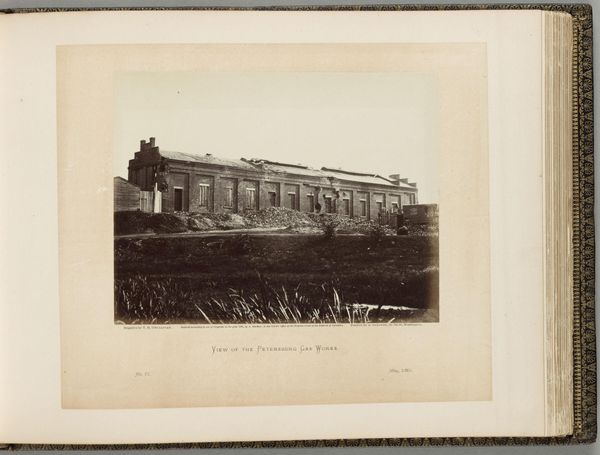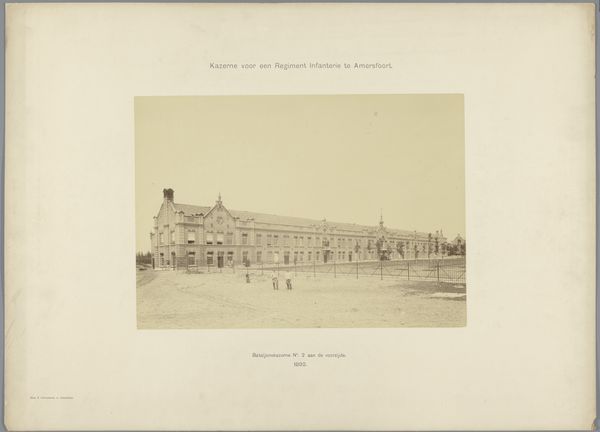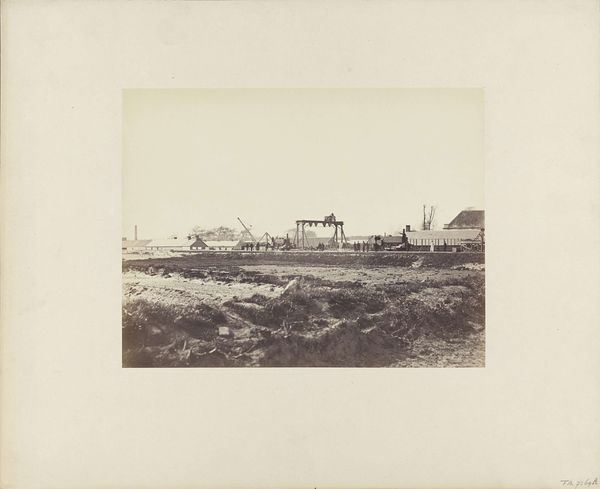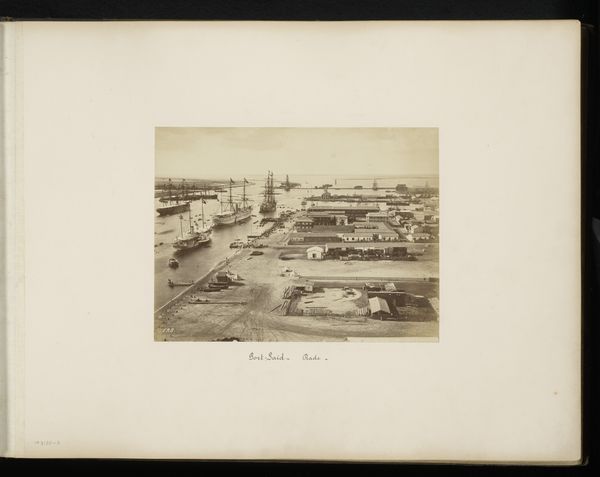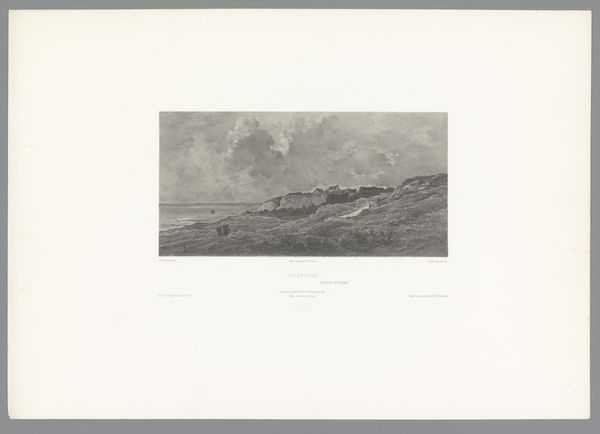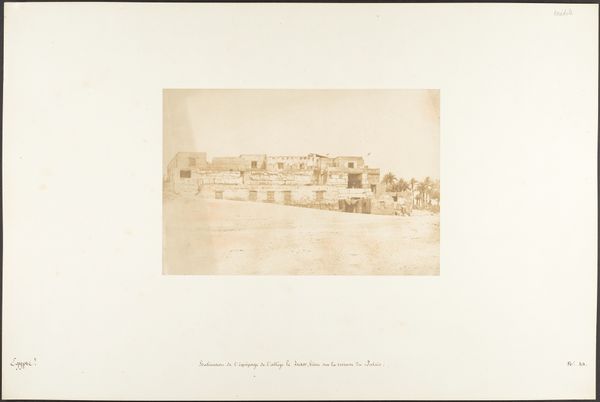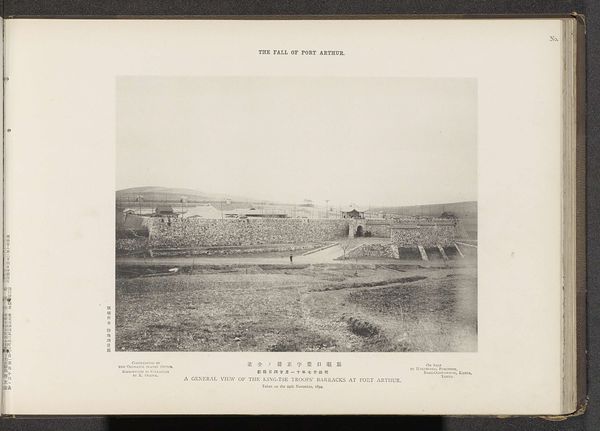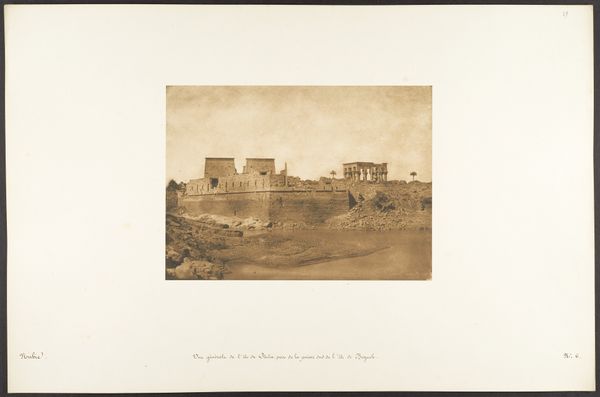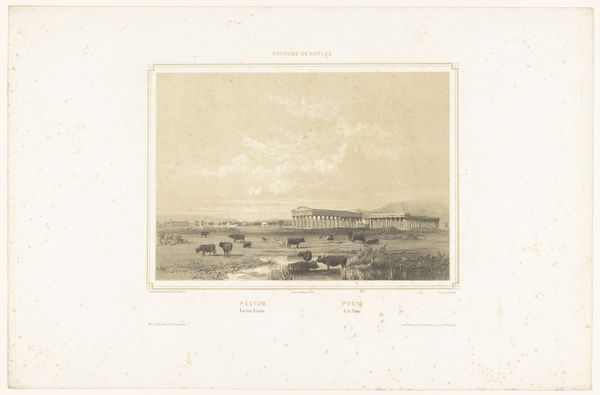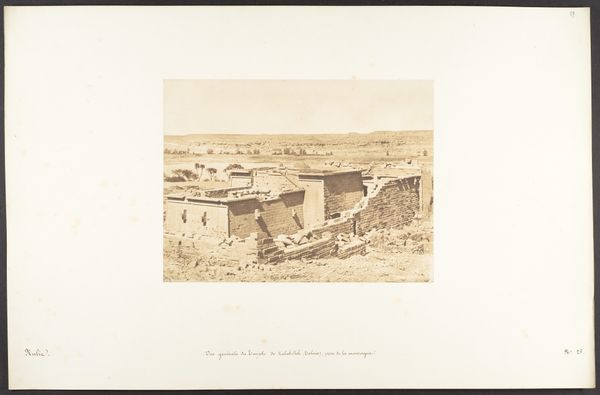
photography
#
landscape
#
photography
#
cityscape
Dimensions: height 48.5 cm, width 66 cm
Copyright: Rijks Museum: Open Domain
Curator: P. Oosterhuis created this gelatin silver print in 1892. Its title? "Kazerne voor een Regiment Infanterie te Amersfoort"—or, "Barracks for an Infantry Regiment in Amersfoort." Editor: Wow. Stark. Even with that slightly sepia tone, it feels...raw. That incomplete building skeleton looms. It has a strange sort of beauty in its awkwardness. Curator: That sense of rawness, I think, speaks to its historical context. Amersfoort's military history, and barracks like these, became integral for processes of militarization, nation-building, and, inevitably, war, and wartime violences, as we moved toward the twentieth century. The construction itself points to those accelerating militarist trajectories. Editor: You know, it's like seeing the bones of something not quite born yet, or maybe a metal bird struggling to take flight. So, given the subject and its social function, I am immediately thinking of all of those who passed through there and everything that structure meant to the unfolding lives affected by war. I imagine they carried dreams and burdens. Did they ever look up at these very girders? Curator: Indeed, focusing on those personal stories and material conditions lets us examine the socio-political ramifications more deeply. For instance, period photographs such as these were often employed as documentary devices and means of cataloguing and, by extension, managing the landscape of military life, solidifying institutional power. Editor: Managing, yes...The people in the shot almost blend in—like they're part of the machinery of this massive undertaking. It hits hard seeing that now. It gives it this feeling of being destined and irreversible, like looking at it implies accepting some predetermined idea of order and service and all the rest. Curator: Well, it’s through the interplay of these kinds of documentary practices and personal experiences that military narratives are shaped. Considering these angles enables a more profound understanding of how architecture, photography, and social realities intertwine, influencing personal experiences in turn. Editor: Makes you want to push past that image, look for the stories outside the frame... the messiness of human emotion amidst the grand plans of empire. Curator: Precisely, the photograph as a trigger to contemplate a broader socio-political theater. Editor: What’s so curious is this one, fairly simple image opens up entire vistas for thinking. Thank you for your careful lens on that.
Comments
No comments
Be the first to comment and join the conversation on the ultimate creative platform.
